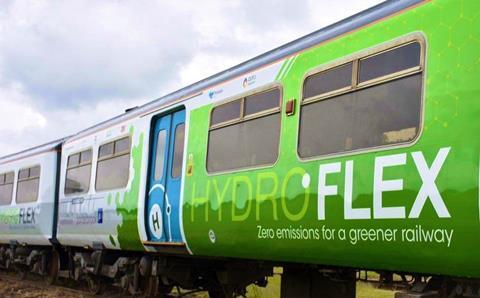
UK: The government’s first UK Hydrogen Strategy says electrification is likely to be the best way to decarbonise non-electrified railways, ‘because electrified trains are faster, quicker to accelerate, more reliable and cheaper’. However, there will also be a role for battery and hydrogen trains ‘on some lines where they make economic and operational sense’.
The strategy published on August 17 outlines plans to develop a low carbon hydrogen economy by 2030, and how the government will support innovation and stimulate investment to support this.
The document says transport is a crucial early market for hydrogen, which is likely to be fundamental to achieving net zero in the sector. Noting that rail is already one of the greenest ways of moving people and goods, the strategy envisages that hydrogen will be in use across a range of transport modes by 2030, including rail, lorries and buses, along with ‘early stage’ use in shipping and aviation.
Publication of the strategy was welcomed by the Railway Industry Association. ‘Network Rail has identified that up to 1 300 km of railway lines will require hydrogen trains in order to achieve the government’s Net Zero by 2050 goal’, commented RIA Technical Director David Clarke. ‘Yet, as we say in RIA’s Rail Decarbonisation Campaign 21, if we are to successfully decarbonise our rail network we need to get started today, in 2021, both electrifying railways lines and beginning the production of hydrogen and battery trains.
‘As the government considers the roll-out of this strategy, and the use of hydrogen in decarbonising the economy, we ask them to commit now to fleet orders of hydrogen rolling stock — in order to support green jobs and investment up and down the country.’



